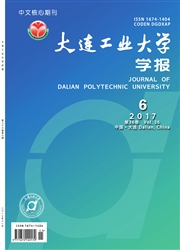

 中文摘要:
中文摘要:
采用KCTP(chaingrowthKumadacatalyst—transferpolycondensation)法合成了头尾相连的聚3-己基噻吩(HT—P3HT)。研究了催化剂1,3-双(二苯基膦)丙烷氯化镍[Ni(dppp)C12]的用量和促进剂氯化锂的加入对P3HT相对分子质量(M1)及其分布的影响,利用1H—NMR、GPC对P3HT结构及相对分子质量进行了表征。结果表明,所得P3HT具有高度的有序性。P3HT的相对分子质量及多分散系数(PDD由单体2,5-二溴-3己基噻吩(1)与催化剂的摩尔比所决定。随着单体与催化剂摩尔比的增大,P3HT的相对分子质量成线性增大而多分散系数呈线性下降;当加入促进剂无水氯化锂而其他条件不变时,所得P3HT的相对分子质量变大而多分散系数变小。
 英文摘要:
英文摘要:
The influences of the amounts of catalyst Ni(dppp)Cl~ and the additive LiC1 on the relative molecular weight (Mr) and polydispersity of the P3HT were investigated when KCTP (chain growth Kumada catalyst-transfer polycondensation) method was used to synthesize head-tail poly(3-hexylthiophene) (HT-P3HT). The structure and relative molecular weight of P3HT were characterized by 1 H-NMR and GPC. The data of 1 H-NMR indicated that the polymers exhibited high regularity and the data of GPC suggested that P3HT had higher relative molecular weight and narrower polydispersity with LiC1 than that without LiCI. Mr and PDI of the P3HT were not in linear relationship with the molar ratio of the monomer to the catalyst, and the regularity was increased.
 同期刊论文项目
同期刊论文项目
 同项目期刊论文
同项目期刊论文
 期刊信息
期刊信息
